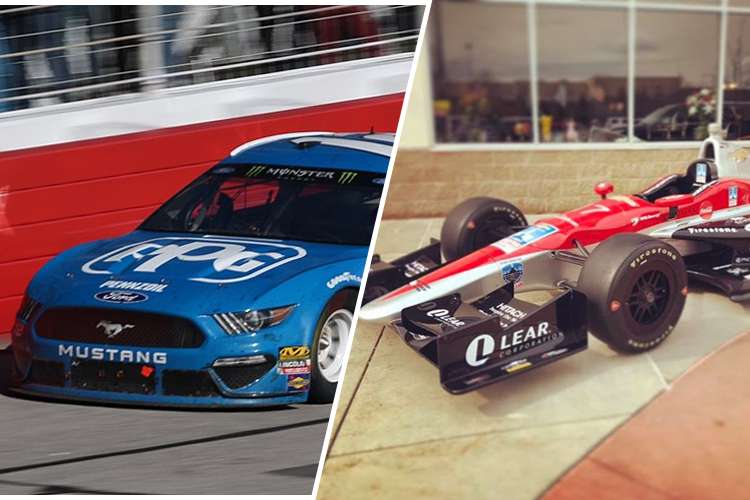Last Updated on April 6, 2022 by Pittalks
Did you know that the fastest speed hit by a NASCAR vehicle was recorded at 199mph, while IndyCar are known to reach 236mph?
The longest NASCAR track is the Talladega Superspeedway (2.66 miles), while the longest track in IndyCar is the Indianapolis Motor Speedway, spanning 2.5 miles. Why are there such differences?
Let us explore some of the significant differences between the two types of racing.
Design
IndyCar is an open-wheeled, open-cockpit race, which is one of the biggest differences between the two types of cars. IndyCar designs share some resemblance with F1 cars. They are engineered to achieve optimal aerodynamic performance. In simpler words, IndyCar are a lot faster than NASCAR.
NASCAR cars resemble an average sedan from the outside but on the inside, there is one seat specially designed for the driver. The cars are stock cars, made to drive on rough roads, and are durable enough to take a few knocks here and there.
Weight
Between the two, there is a substantial weight difference. IndyCar are designed to go really fast, even faster than F1 cars. To achieve that, IndyCar only weighs around 1,500 lbs.
Although NASCAR cars have their doors sealed (except the driver’s door) to reduce the weight, they are relatively heavy. A NASCAR Cup series car weighs at least 3,300 lbs, 2 times heavier than an IndyCar.
Engines
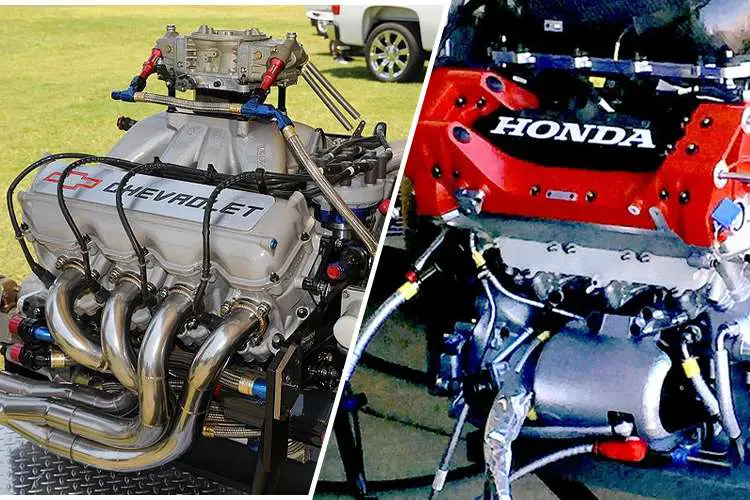
| NASCAR | Indycar | |
|---|---|---|
| Configuration | V8 | V6 |
| HP | 550-750 | 550-700 |
| Average top Speed | 199 mph (321km/h) | 236 mph (380km/h) |
| Acceleration | 3 – 3.5 seconds (0-60 mph) | 3 seconds (0-60 mph) |
| Compression Ratio | 12:1 | 15:1 |
| Temporary engine boost | No | Push-to-pass |
| Restrictor plate | Yes | No |
| Max RPM | 8,000-9,000 | 12,000 |
| Engine Displacement | 5.87 liter (356 cubic inches) | 2.2 liter (134.25 cubic inches) |
| Fuel Injection System | Indirect electronic fuel injection (Cup series) Carburetors (Xfinity and Truck series) | Both direct and indirect electronic fuel injection |
| Fuel Type | Sunoco Green E15 (racing fuel with 15% ethanol) | E85 mix (85% ethanol and 15% racing fuel) |
| Turbocharger | No | Yes |
| Gearbox | 4-speed H-pattern (manual) | 6-speed paddle-shift (semi-automatic) |
| Fuel capacity | 18 US gallons | 18.5 US gallons |
NASCAR use heavier V8 engines, Indycar use V6
In the past, the NASCAR Xfinity series had cars with a powerful V-6 engine. The Busch Series 1994 was the last year to see V-6 engines in NASCAR. And in 1995, NASCAR saw the introduction of V8. Up until now, the power output of a NASCAR car is limited to 750 hp on tracks shorter than a mile and 550 hp on tracks longer than a mile.
This limitation can be achieved by using a restrictor plate, which reduces the air-fuel mixture entering the combustion chamber. The idea behind this is that NASCAR don’t want their cars to ever go faster than 200mph, making them fly to the sky, or even worse, to spectators.
Indycar do not use restrictor plate. Instead, they use a rev limiter device to stop the engine from running higher than 12,000 RPM.
In the past, Indycar engine manufacturers focused on minimizing cost and engine failure and decided to manufacture V-8 engines. But in 2009, the manufacturer decided to halt production of V-8s and started to focus on new third-generation V-6 turbo engines for the 2012 series.
With the new third-generation engines approved, more manufacturers came on board, increasing competition. Currently, Chevrolet and Honda are making V-6 twin-turbo engines for IndyCar. These third-generation engines will retire at the end of 2022.
IndyCar have engine boost, NASCAR don’t
To make overtaking happen more often in IndyCar, they have introduced a push-to-pass system. This gives drivers an added 50 horsepower for a limited time (15 seconds).
In NASCAR, there is no such system. Therefore, overtaking by speed in NASCAR is a lot more difficult, as all cars are pretty much the same (because of the regulations), and dirty air left by front cars will slow you down significantly.
So, how do you overtake in NASCAR?
You do that by being patient, minimizing mistakes, doing pit stops at the right time, and most importantly, avoiding (or sometimes, causing) accidents.
NASCAR use a 4-speed manual H-pattern gearbox, IndyCar use a 6-speed paddle-shift
Most NASCAR tracks are oval and drivers hardly change gears during the race (except pit stops) since they are running at a constant speed. That’s the main reason why NASCAR cars use a 4-speed manual H-pattern gearbox.
I also write an article fully explaining this topic, you can read it here: Are NASCAR cars manual? How can they shift w/o clutch?
Indycar, on the other hand, use a 6-speed paddle-shift gearbox. This is because the tracks they race on are often road courses, which include lots of right and left turns. Therefore, drivers have to shift gears more regularly using the paddle behind the steering wheels.
Paddle shifting allows drivers to change gear more easily and eliminate the need of using a clutch pedal.
NASCAR use indirect fuel injection, IndyCar use a combination of indirect and direct
In the past, all NASCAR cars used carburetors. Eventually, the NASCAR Cup series switched to indirect electronic fuel injection (EFI). However, the other 2 series (Xfinity and Camping World Truck) still use carburetors.
This is due to the fact that NASCAR engines are designed to work with carburetors. These 2 series don’t want to switch to EFI as it will cost their teams millions of dollars to build new engines.
IndyCar, on the other hand, use a combination of indirect and direct fuel injection. This “dual injection” system offers benefits of both types.
Direct injection allows the fuel to be injected into the combustion chamber very precisely, which results in more power and better fuel efficiency. The indirect injection helps to reduce carbon accumulation on intake valves. In low load conditions, it produces better air-fuel mixture.
NASCAR use E15 fuel, IndyCar use E85
All NASCAR cars currently use Sunoco Green E15 fuel, which is a type of racing fuel containing 15% ethanol.
IndyCar use a variation of E85 fuel. This contains 85% ethanol and 15% racing fuel. Before that, this series used to use methanol for their cars. Eventually, they switched to E85 because it’s safer, more efficient, and more eco-friendly (compared to methanol.)
So, what are the differences between E15 (used by NASCAR) and E85 (used by IndyCar)?
Ethanol provides less energy per gallon than gasoline. According to the US department of energy, “E85 that contains 83% ethanol content has about 27% less energy per gallon than gasoline. The impact to fuel economy lessens as ethanol content decreases” This means that NASCAR fuel has better gas mileage than IndyCar’s, requiring IndyCar to have a bigger fuel cell.
However, IndyCar fuel, with a higher ethanol percentage, has a higher octane number than NASCAR’s. This means IndyCar fuel provides more power and better performance.
Environment and politics are other good reasons why IndyCar use E85. This fuel produces less emission, creates more jobs in the US rural areas, and reduces US’s oil dependence on foreign oil.
The race itself
Typically, Indycar races have an entry list restricted to 33 cars, while NASCAR usually involves 40 cars in a single race. In the past, the number of cars in a NASCAR race used to be 60. The first Daytona 500, which was held on a beach in 1959, had 59 starters!
The tracks between the two race series are different too. NASCAR events are held on oval tracks. There are a few road courses to make the series more exciting. IndyCar mainly holds its events on road courses. However, there have been very few races on oval tracks.
That said, the style of racing is poles apart. NASCAR has more caution flags than IndyCar. Although both motorsports do not allow drivers to bump into each other, this rule is not strictly enforced in NASCAR. Hence, more accidents result in longer races.
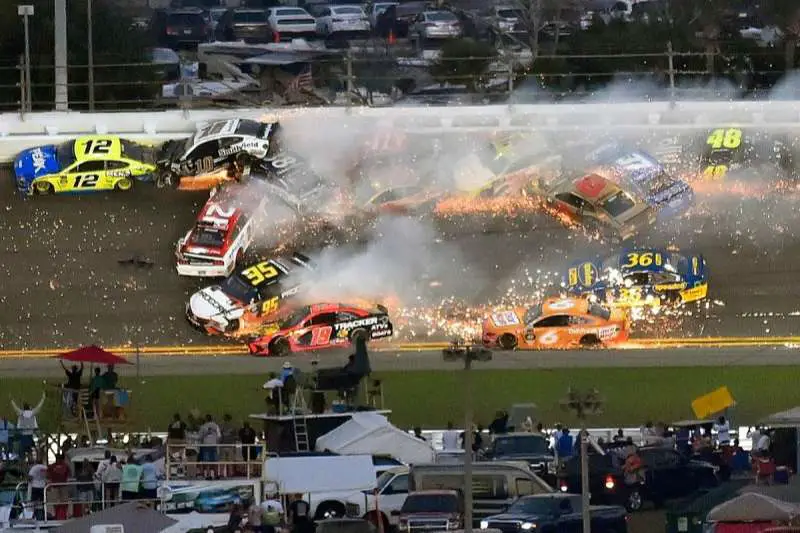
On the other hand, IndyCar are lightweight, fast vehicles, and slight contact with another car at high speeds can send the car airborne. Hence, the rules dictate that there is no touching allowed between IndyCar.

NASCAR races can last anywhere between 2.5 and 4 hours. However, some races can take upwards of 6 hours because of delays (due to harsh weather, crashes) or simply long tracks.
Most of the IndyCar races finish within 1 or 2 hours, depending on the number of laps. For instance, a 200-lap race at Indianapolis Motor Speedway can last around the 3-hour.
Pit stops
NASCAR pit stops usually involve 5 people over the wall. This number in Indycar is 6.
The role of each person in the crew is also very different.
| NASCAR | IndyCar | |
|---|---|---|
| Tire changer | 2 people | 4 people |
| Tire carrier | 1 person | none |
| Jackman | 1 person | 1 person |
| Fueler | 1 person | 1 person |
| Number of lug nuts per wheel | 5 | 1 |
| Avarage time | 13 – 16s | <10s |
| Number of pit stops per race | 4 – 12 | 5 – 10 |
NASCAR pit crew includes only 2 tire changers, while IndyCar’s have 4. IndyCar tire changers only have to work with 1 lug nut to remove a wheel, while NASCAR tire changers have to remove all 5. More lug nuts also mean more room for human errors, making races more unpredictable.
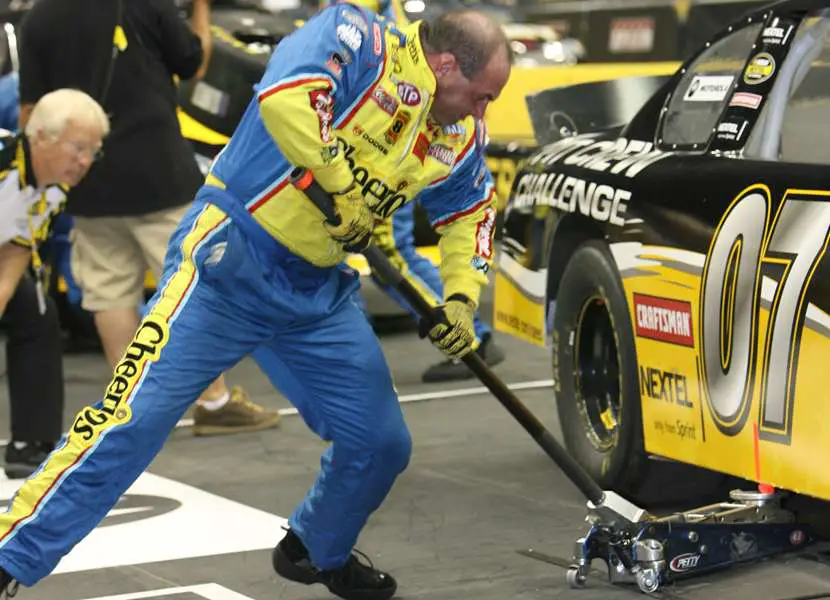
Because IndyCar pit crew are allowed to go over the wall before the car comes to a complete stop, they can save precious seconds. This is not the case in NASCAR, where crew members can only go over the wall after the car gets in the pit box. This is also the reason why IndyCar pit crew doesn’t have any tire carrier as all tires are already at the right place when the car arrives.
Typically, a NASCAR pit stop takes 3 to 6 seconds longer. This is because:
- IndyCar crew have 1 extra person
- IndyCar crew are allowed to go over the wall before the car arrives
- There is only 1 lug nut in an IndyCar’s wheel
The pit stop strategies are also very different in the 2 sports. NASCAR wrecks happen more often, which leads to all the cars running under the yellow flag for many laps. As a result, most of the pit stops in NASCAR are done under yellow flags, with the goal of not losing too many positions while pitting.
In IndyCar, there are fewer accidents, which means that more teams pit under the green flag. Of course, the cost of a green flag pit stop is that it’s more likely to lose (many) positions.
This difference leads to different pit stop strategies. The level of calculation involved in an IndyCar pit stop is much higher than in NASCAR. It doesn’t mean that NASCAR teams just wing it without any plan. However, as NASCAR’s rule of thumb, “you do not pit unless you absolutely have to.”
Let’s take a look at some pit stops of the 2 sports!
Tire compounds
There is only one tire compound in NASCAR, which is harder than those used in IndyCar. This is because NASCAR is an endurance race, and teams want to make sure that the tires last as long as possible (even though it means less grip and speed.)
In addition, NASCAR’s oval races do not offer rain tires. That’s why NASCAR doesn’t race in the rain.
IndyCar has two types of tires available:
- Black tires: harder, last longer, but offer less grip
- Red tires: softer, better grip, but wear out faster
Different tire compounds also allow different pit stop strategies. IndyCar teams can choose to overcut, where they use harder tires at first to stay longer on the track and then switch to softer tires later in the race. This strategy offers a grip advantage at the end of the race.
Another strategy is undercut, where teams use softer tires at first, pit earlier, and then switch to harder ones. This strategy offers more grip at the beginning of the race. When you re-enter the track and your opponents pit later, you’ll have the opportunity to overtake him.
Is NASCAR more dangerous than IndyCar?
Drivers and cars safety is a prime consideration in any race series, whether it is NASCAR, IndyCar, or even F1. However, since drivers are dealing with powerful cars, slight human errors can cause fatal accidents.
The NASCAR Cup series saw 28 deaths, with the last one in 2001, when Dale Earnhardt was killed on the last lap of the Daytona 500. The total number of fatalities pales in comparison with IndyCar.
IndyCar has witnessed 95 deaths in total, with the most recent death in 2015 when Justin Wilson died at Pocono Raceway.
In contrast to NASCAR’s single death in the last 22 years, IndyCar has had 4, which makes the race series more “dangerous” than NASCAR. In terms of the number of deaths per race, IndyCar has a fatality rate of 7% per race, while NASCAR has a fatality rate of 1% per race.
So, the answer is IndyCar is more dangerous than NASCAR!
But why?
It’s true that NASCAR has more crashes per race. However, NASCAR drivers are protected by a roll cage, while IndyCar drivers’ heads are exposed (because of the open cockpit design.)
Let’s look back the two shocking fatal crashes of the motorsports!
Which one is more popular?
Both are very popular motorsports with each having millions of fans across the world. In the 90s, IndyCar was far more popular than NASCAR, but that changed when NASCAR started to appeal to a larger audience.
When looking at the numbers, 61,000 people attend NASCAR events while only 48,000 people attend IndyCar races. However, in some large IndyCar races, such as the Indy500, it can draw more than 300,000 people to the event.
That said, NASCAR is more popular in viewership as it attracts 10.1 million viewers per race when compared to the 1.8 million viewers watching IndyCar races.
Are IndyCar faster than NASCAR?
Since the goal of these two intense motorsport races is to cross the finish line before others, these cars are sure fast. IndyCar are lightweight racing cars with engines capable of producing between 550-700 HP and reaching a top speed of 236 mph.
NASCAR engines, on the other hand, produce between 550-750 HP, capable of reaching a top speed of 200 mph.
So, IndyCar is, indeed, faster than NASCAR, and it even faster than F1 cars!
The question is why are NASCAR engines slightly more powerful, but they are slower?
There are a few reasons for this:
- Weight: NASCAR cars are heavier, even an NASCAR engine itself is heavier than an IndyCar engine.
- Aerodynamic: IndyCar have better aerodynamic design, which results in better downforce. And more downforce means faster speed at corners.
- Restrictor plates: as mentioned above, NASCAR use this little piece to ensure their cars not go too fast and endanger both drivers and spectators.
Can NASCAR beat IndyCar?
In terms of sheer popularity, NASCAR is already ahead as the most popular motorsport in the world, with each race’s viewership crossing 10 million.
When it comes to the cars themselves, NASCAR cars have a slightly more powerful engine, but their speed during a race is restricted to 200mph. On the other hand, IndyCar are lightweight and are capable of attaining top speeds of 235-245mph.
The dynamics are starting to change. IndyCar and NASCAR are both planning to go towards hybrid engines in the future. Steve Phelps, NASCAR president, said in an interview that the series will have “some type of hybrid engine system with an electrification component.”
References:
- https://www.carandbike.com/news/how-fast-is-an-f1-car-top-speeds-of-f1-indycar-motogp-and-more-2727217
- https://nascarchronicle.com/how-nascar-engines-work/
- https://www.sunocoracefuels.com/fuel/green-e15
- http://www.scientificsolutions1.com/IndyCar%20Article_PIN_Jan_17.pdf
- https://stockcarracing.fandom.com/wiki/Restrictor_plate
Related articles
-
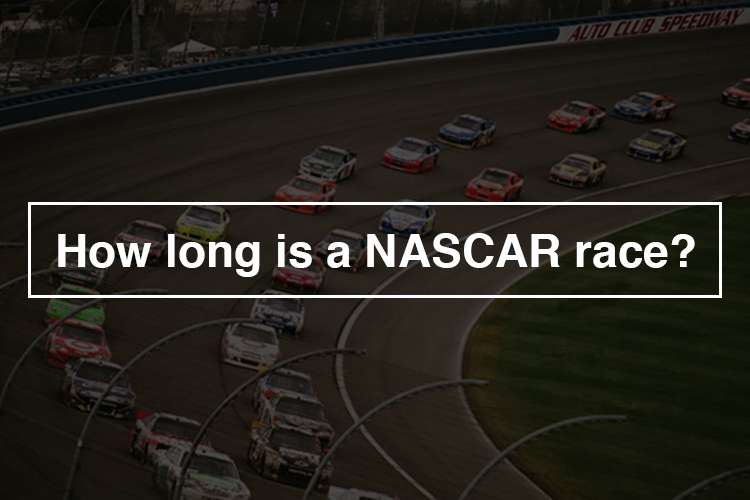
How long is a NASCAR race? (In terms of miles & hours)
If you’re a new NASCAR fan, then you’re probably wondering how long the races are.
The answer depends on the track and the race, but typically they last between 2.5 and 4 hours. Of course, there’s a lot of action…Read more
-
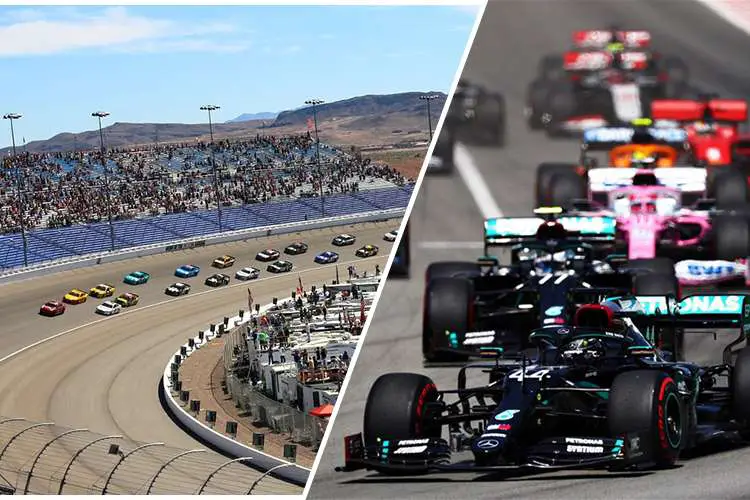
NASCAR vs. F1: The Ultimate Showdown
Did you know that the first NASCAR race was held in 1949, while the first Formula One (F1) race wasn’t until 1950?
Nowadays, F1 races are typically watched by fans all…Read more
-
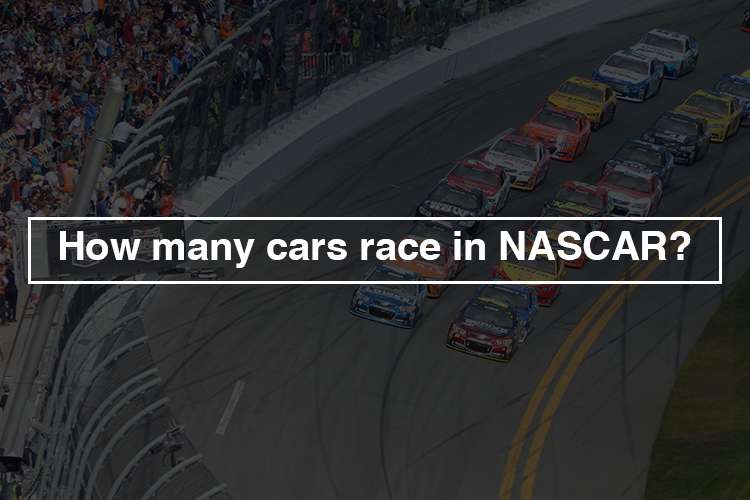
How many cars race in NASCAR? [1998-2022]
Over the years, the number of cars in NASCAR has varied. In the 2020 Daytona 500, there were 40 cars, while before 2016, there were up to 43 cars.
Today, the NASCAR Cup Series has 40 cars in a race, with…Read more

